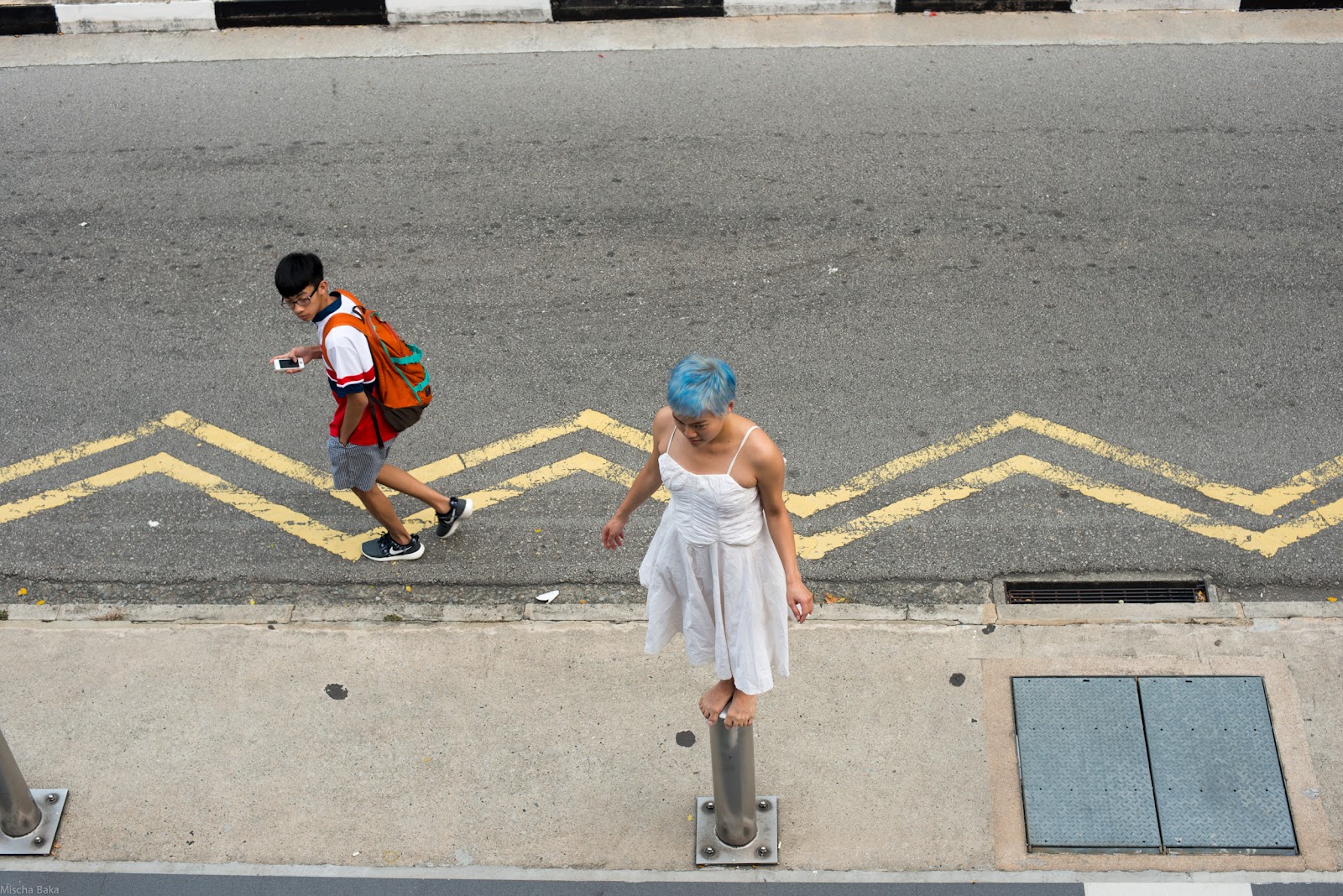yeah!, yeah!, yeah!
A series of portraits. Young woman with a skateboard, blue hair and wearing a white dress poses for three portraits – yeah 1, yeah 2, and yeah 3. You can read them as a sequence. In the first, our subject stands with one hand on hip and skateboard resting on her opposite shoulder. Her stance is boisterous as she shouts. Her eyes are closed and her neck musculature is tense; each tell us how loud this photograph is. Second in the sequence is closely matching in pose but without the shouting. She looks directly at the camera. Without the vocal performance, her pose is more relaxed but still carries a quality of strength. The kinetics of her scream has given way to a sense of composure, with a confident, at ease tilt of her body towards the camera. The third portrait in the sequence is composed differently. A full body portrait, it carries more ambiguity. The woman stands with feet awkwardly set apart in a stance that only just seems natural. She holds her skateboard unnaturally under her arm, as a soldier would ceremonially hold a firearm. Her brow is furrowed as she, again, looks directly at the camera. This time her demeanor feels guarded.
Our woman with blue hair and the white dress leaves these portraits to appear in a series of more performative compositions. In a series of three titled Action, she climbs on or lays beside an irregularly tiled wall. The tessellated background provides a stage for her performance. This playful sequence is extended in a further work titled Wind. Here the woman stands irreverently by the wall on a public seat – the wind blowing her dress upwards in what appears to be an opportunistic homage to Marilyn Monroe’s ‘flying skirt’.
Two images titled Lookout and Phone present a more narrative sequence. In Lookout, the woman with blue hair is viewed from above, standing barefoot on a bollard and looking to her right. She occupies only the lowest third of the composition. The vertical arrangement of the subject contends with the horizontal orientation of the street and particularly the yellow zig-zag that she interrupts. Her poise and the geometric arrangement of the composition feel ridged, but this is undone by the casualness of her unzipped dress. In Phone, the woman has turned 180 degrees. The image is unique in the series with the inclusion of a secondary figure. A young man walks past, distracted from looking at his phone by the woman’s performance, reminding us that these images toy with the street photography genre, even with their sense of choreography.








